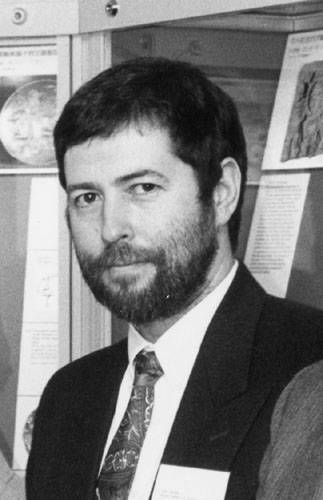
Organising Committee

| Professor Michael Willis
(De Montfort University/British Museum) - Committee Chairman and UK Representative
of EASAA |
Dr Michael Willis is Professor of South Asian Studies at De Montfort University, Leicester. A specialist in temple architecture, Dr Willis has recently been working on Udayagiri in central India. He is the Director of the Vidisha Project and Chairman of the Society for South Asian Studies at the British Academy. His publications include Buddhist Reliquaries from Ancient India (London, 2000) and 'The Antiquity of Sun Worship in Central India', with Meera Dass in South Asian Studies 18 (2002): 25-45.
 |
Mr Joe Cribb (British Museum) |
Joe Cribb has worked in the British Museum's Department of Coins and Medals since 1970. He is a specialist in Asian coins and currencies. He has written extensively on the coins of South, Central and South-East Asia, with particular emphasis on the numismatic evidence for the Kushans. He was awarded the Hirayama Prize for 1997 and the Royal Numismatic Society's Silver Medal in 1999.
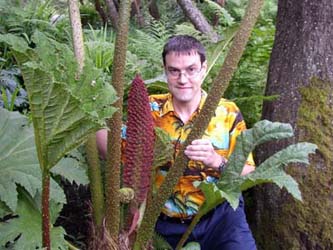
|
Dr D. Fuller (Institute of Archaeology, UCL) |
Dorian Q Fuller, is lecturer in Archaeobotany at the Institute of Archaeology, University College London.His PhD from Cambridge (2000) studied evidence for early agriculture in South India, and he continues a variety of archaeological fieldwork and archaeobotanical analyses on sites in Karnataka, Andhra Pradesh, Tamil Nadu, Orissa, Uttar Pradesh and Uttaranchal. He also works on material from Africa, including field projects in Sudan and Morocco.
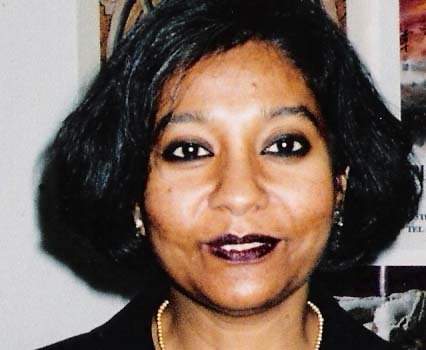 |
Dr. Madhuvanti Ghose (SOAS) |
Dr. Madhuvanti Ghose is lecturer in the History of South Asian Art and the School of Oriental and African Studies. She specialises in ancient Indian art and iconography. The interaction of South Asia with the Hellenistic, Roman, Near/Middle Eastern, Iranian, Central Asian and Chinese worlds from the Bronze Age to the coming of Islam is one of the major areas of her research activities. Her forthcoming publications include: From Nisa to Niya: New Discoveries and Studies in Central and Inner Asian Art and Archaeology (co-editor, 2004), The Origins of Indian Cult Images (2005) and A Catalogue of the Gandhara and Central Asian Antiquities at the Ashmolean Museum, Oxford (2005). She is one of the co-founders of the Circle of Inner Asian Art (CIAA) which promotes the pre-Islamic art of Central Asia worldwide.
Dr John Guy (V&A)
John Guy, MA, FSA, is Senior Curator of Indian & Southeast Asian Art at the Victoria and Albert Museum, with responsibility for the Hindu-Buddhist sculpture collections, and has served as an advisor to UNESCO on historical sites in Southeast Asia. His research interests focus on South Indian cultural relations with Southeast Asia in the fields of sculpture, architecture and the textile trade. He has published widely, including Woven Cargoes: Indian Textiles in the East (1998), Indian Art and Connoisseurship (editor) (1995), Arts of India: 1550-1900 (co-editor) (1990), Ceramic Traditions of Southeast Asia (1989), and Oriental Trade Ceramics in South East Asia (1986). He has contributed to a range of international journals, including the Journal of the Royal Asiatic Society, Bulletin de l’Ecole Francaise d’Extreme-Orient, Marg, Transactions of the Oriental Ceramic Society, Journal of the Siam Society, Burlington Magazine, etc, and to a number of collected volumes and Festschrifts.
He has also contributed to many exhibition catalogues, including The Peaceful Liberators: Jain Art from India (LA/London1994), Dancing to the Flute: Music and Dance in Indian Art (Sydney, 1997), Cultures of the Indian Ocean (Lisbon, 1998), Gold and Civilisation (Canberra, 2001) Vietnamese Art (Brussels-Vienna, 2003-4), and the V&A’s exhibition Exotic: The Meeting of Asia and Europe 1500-1800 (2004).
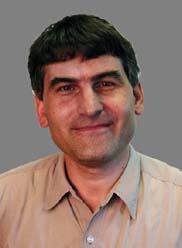 |
Dr Robert Harding (Institute of Archaeology, UCL) |
Robert Harding is a lecturer in South Asian Archaeology at the Institute of Archaeology. His Ph.D was based on fieldwork at the site of Rajgir in Bihar, and is to be published this year. His interests include the archaeology of Buddhism and the history of archaeology in India.
 |
Dr. Elizabeth Lambourn Head of Research and Research Fellow, Faculty of Art and Design, De Montfort University, Leicester. |
Elizabeth is an art historian by training and was awarded her MA Hons. in the History of Art from the University of Edinburgh where she specialised in Islamic art and architecture. She completed her doctoral thesis at SOAS in 1998 on the Islamic architecture and marble carvings of the port of Khambhat in Gujarat. In 2002 she was awarded as British Academy - Society for South Asian Studies Postdoctoral Research Fellowship for further research on the Islamic architecture of western India, based at De Montfort University. Elizabeth has published a number of articles on aspects of Islamic material culture in western India and is currently finishing a monograph on the Islamic material culture of Khambhat and the export of its marble carving around the Indian Ocean rim.
Elizabeth maintains a broad interest in Islamic art and architecture outside South Asia and before joining De Montfort University she undertook several missions for UNESCO, working on the collections of Islamic stone carvings in the Dar al-Athar al-Islamiyya, National Museum, Kuwait. She is also active in research on Islamic Southeast Asia and has been an Honorary Research Associate at the Centre of South East Asian Studies at SOAS since 1999.
Selected Publications
“From Cambay to Pasai and Gresik – the export of Gujarati grave memorials to Sumatra and Java in the 15th century AD”, Indonesia and the Malay World, 31,90 (2003): 221-89.
“Of jewels and horses– the career and patronage of an Iranian merchant under Shah Jahan”, Iranian Studies. 36,2 (2003): 213-58.
“La production de marbre sculpté à Cambaye au Gujarat et son exportation dans l’Océan Indien (XIIIe - XVe siècles Ap. J. C.)“, in Mirabilia Asiatica. Produtos raros no comércio marítimo. Produits rares dans le commerce maritime. Seltene Waren im Seehandel, J. M. dos Santos Alves, C. Guillot and R. Ptak eds., Wiesbaden and Lisbon: Harrassowitz Verlag and Fundação Oriente, (2003): 209-52.
“The English Factory or “Kothi” gateway at Cambay – an unpublished Tughluq structure from Gujarat”, Bulletin of the School of Oriental and African Studies, 65/3 (2002): 495-517.
“‘A
collection of merits…’ Architectural Influences in the Friday mosque
and Kazaruni tomb complex at Cambay in Gujarat”, South
Asian Studies, 17 (2001): 117-49.
Contacting the Committee
The Conference Secretary is Dr Robert Harding
All correspondence should be sent to the committee email address: saa@ucl.ac.uk
Advisory Board
Professor Peter Ucko
Peter Ucko is Professor of Comparative Archaeology and Director of the UCL Institute of Archaeology. His research interests include the analysis of prehistoric art and images; the interpretation of archaeological collections and of displays of sites; and the history of archaeology
Dr Giles Tillotson
Giles Tillotson is Reader in the History of Art in the University of London (SOAS), and a specialist on architecture in India after 1500 AD. Publications include The Rajput Palaces (1987), The Tradition of Indian Architecture (1989), and Building Jaipur (with Vibhuti Sachdev, 2002).
Dr. Derek Kennet (University of Durham)
Dr Derek Kennet is lecturer in South Asian archaeology in the Department of Archaeology at the University of Durham. He has excavated Early Historic/Medieval sites in Maharashtra (Paithan) and Goa (Chandor) and also has research interests in Arabia, Iran and the Eastern Mediterranean where he has also conducted fieldwork. He is interested in the economic development of the Western Indian Ocean in the Early Historic and Medieval periods.
Dr. Shailendra Bhandare (Ashmolean Museum, Oxford)
Shailendra Bhandare is Assistant Keeper for South Asian and Oriental Numismatics at the Ashmolean Museum, Oxford and also a member of faculty (Oriental Studies), University of Oxford. His PhD (university of Bombay, 1999) was on 'Historical Analysis of the Satavahana Era: A study of Coins'. He was appointed as a post-doctoral fellow of the Society of South Asian Studies to work as a Curator in the department of Coins and Medals, British Museum later in 1999. He has published several papers dealing with different aspects of Indian Numismatics and his chief research interests lie in Ancient (500 BCE- 500 CE) and Early Modern (1700-1950) periods of India. He has contributed to conferences and seminars regularly, the most recent of which are 'Between the Empires' (a symposium on the Maurya-Gupta interlude) held at University of Texas at Austin in April 2003 and 'Narratives of the Sea' (a seminar on Indian Ocean Studies) held at the Nehru Memorial Library, New Delhi, 2004. He is currently engaged in preparing catalogues of Indian coins of the late Mughal and colonial periods, for the Fitzwilliam Museum, Cambridge and the British Museum and also pursuing his curatorial duties at the Ashmolean in Oxford.
Dr. Daud Ali (SOAS)
Daud Ali is Senior Lecturer at the Department of History of the School of Oriental and African Studies. He holds a Ph.D from the University of Chicago. Among his publications are Invoking the Past: the Uses of History in South Asia (edited, 1999), Querying the Medieval (with Ronald Inden and Jonathan Walters, 2003) and Courtly Culture and Political Life in Early Medieval Culture (2004). Dr. Ali also serves on several journal advisory boards, including Journal of the Social and Economic History of the Orient (JESHO).
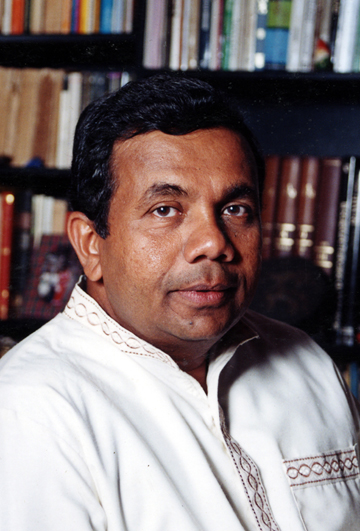 |
Dr. Osmund Bopearachchi (C.N.R.S.) |
Osmund Bopearachchi, Director of Research of the French National centre for Scientific Research (C.N.R.S.) Paris and Visiting Professor of Central Asian and Indian Archaeology and numismatics of the Paris IV Sorbonne University is one of the authorities on Central Asian, Indian and Sri Lankan archaeology and history. He holds B.A. (General) from the University of Kelaniya (Sri Lanka) and Licence (B.A.), Maîtrise (M.A.), D.E.A. (M. Phil.) and Doctorate (Ph.D.) from the Paris I Sorbonne University and “Habilitation à diriger des recherches” (Higher Doctorate) from the Paris IV Sorbonne University.
He has published seven books, contributed to three exhibition catalogues, co-edited three volumes and written 105 research articles in reputed international journals. His first major publication Monnaies gréco-bactriennes et indo-grecques, Catalogue raisonné, Bibliothèque Nationale, Paris, 1991, won the "Gustave Mendel Award" attributed by the French Academy of Inscriptions and Belles-Lettres. The Pre-Kushana Coins in Pakistan, Islamabad, 1995 that he jointly published with Aman ur Rahman won the "Allier De Hauteroche Award" attributed by the French Academy of Inscriptions and Belles-Lettres on march 27 1997.
The Hellenic Numismatic Society (Athens) attributed him "Silver Medal" on the 9th of February 1996, for the substantial contribution to Greek numismatics. On the 22nd of February 2002, the French Academy of Inscriptions and Belles-Lettre awarded the "Prix Drouin - best publication on Oriental Numismatics" to his recent book: Sylloge Nummorum Graecorum. Graeco-Bactrian and Indo-Greek Coins. The Collection of the American Numismatic Society, Part 9, New York, 1998.
He was the Director of French Mission of Archaeological Co-operation in Sri Lanka, Corresponding member of the American Numismatic Society, Life Member of the Polish Numismatic Society, Life Member of the Hellenic Numismatic Society (Athens), Fellow of the Royal Numismatic Society (London) and the President of the Indian Society for Greek and Roman Studies.